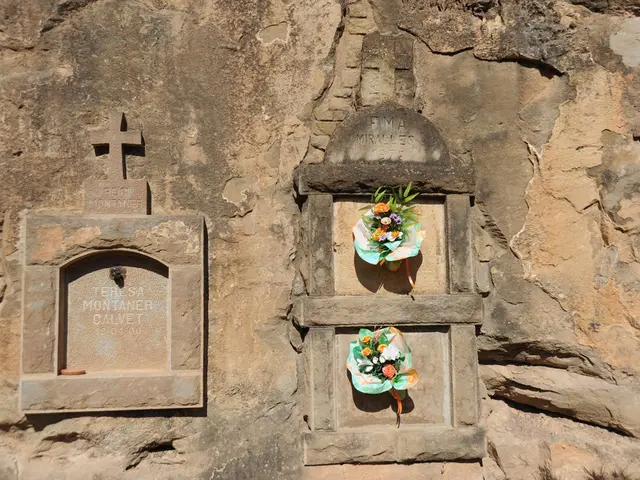Growing these 5 Varieties of Lavender for Stunning Aroma and Captivating Blossoms
Lavender, with its fragrant flowers and versatile uses, is a popular choice for gardeners around the world. Different types of lavender plants—English, French, Spanish, Portuguese, and Lavandin—have distinct characteristics and growing requirements.
English Lavender (Lavandula angustifolia)
The most common variety, English lavender is a bushy perennial that grows up to 3 feet tall. It boasts small blue-violet flowers and is edible, making it a great addition to culinary endeavors. English lavender prefers full sun, well-drained soil, and tolerates cold weather. It often blooms twice a year, with varieties such as ‘Hidcote’ (deep purple), ‘Munstead’ (violet-blue), and ‘Miss Katherine’ (pink) being particularly popular.
French Lavender (Lavandula dentata)
French lavender is characterised by its fringed leaves and compact shrub form, making it ideal for pots, containers, and raised beds. It prefers a warm, dry climate and moderate winter temperatures. Although it is often grown as an annual or tender perennial, the 'Royal Crown' variety is a compact option that is well-suited to warmer areas.
Spanish Lavender (Lavandula stoechas)
Spanish lavender is heat and drought tolerant, with a unique pine-like scent and fern-like leaves. It thrives in hotter, humid/drier climates and is often found in regions that experience prolonged periods of drought. Spanish lavender blooms once a year and is a great companion plant, attracting beneficial insects.
Portuguese Lavender (Spike Lavender) (Lavandula latifolia)
Portuguese lavender, also known as spike lavender, has broader leaves than other lavenders and is highly fragrant. It is drought tolerant and prefers warm, dry summers. It blooms once a year and is praised for its ability to attract bees and other beneficial insects.
Lavandin (Lavandula x intermedia)
Lavandin is a hybrid of English and Portuguese lavender, resulting in larger plants (up to 3 feet tall) with long flower spikes. It is highly fragrant and blooms once a year, later in summer. Varieties such as ‘Phenomenal’ (heat/humidity tolerant) and ‘Provence’ (fragrant) are popular choices.
Common Growing Requirements
All lavender types prefer sunny, well-draining conditions. They thrive in soil that is sandy or gritty, and avoid heavy clay to prevent root rot. Moderate watering is recommended, and pruning after blooming helps maintain shape and encourages growth. Lavender plants prefer warm summers, with frost tolerance varying by type.
In conclusion, English lavender is the hardiest with multiple bloom cycles, French lavender suits warmer, moderate winter areas and is popular for containers, Spanish lavender thrives in heat and drought, with a unique scent and distinctive flower shape, Portuguese lavender (spike lavender) has broader leaves, blooms once, and is great for attracting beneficial insects, and Lavandin, a hybrid, combines vigor and fragrance, blooming once later in summer, with enhanced heat and humidity tolerance. These distinctions help gardeners choose varieties suited to their local climate and desired garden use.
Sources:
[1] Gardening Know How. (n.d.). Types of Lavender. Retrieved from https://www.gardeningknowhow.com/ornamental/flowers/lavender/types-of-lavender.htm
[2] The Spruce. (2020). Types of Lavender: Choosing the Right Variety for Your Garden. Retrieved from https://www.thespruce.com/types-of-lavender-1807450
[3] Proven Winners. (n.d.). Lavender: A Fragrant Favourite. Retrieved from https://www.provenwinners.com/plant-library/lavender
[5] Monrovia. (n.d.). Lavender. Retrieved from https://www.monrovia.com/plant-library/lavender/
English Lavender, being a bushy perennial, is perfect for home-and-garden scenarios, especially considering its edible nature, which makes it an excellent addition to the lifestyle aspects of a home, such as culinary endeavors. French Lavender, on the other hand, with its fringed leaves and compact shrub form, is ideal for gardening in pots, containers, and raised beds, making it a suitable option for those seeking floral decorations for their home-and-garden lifestyle.








